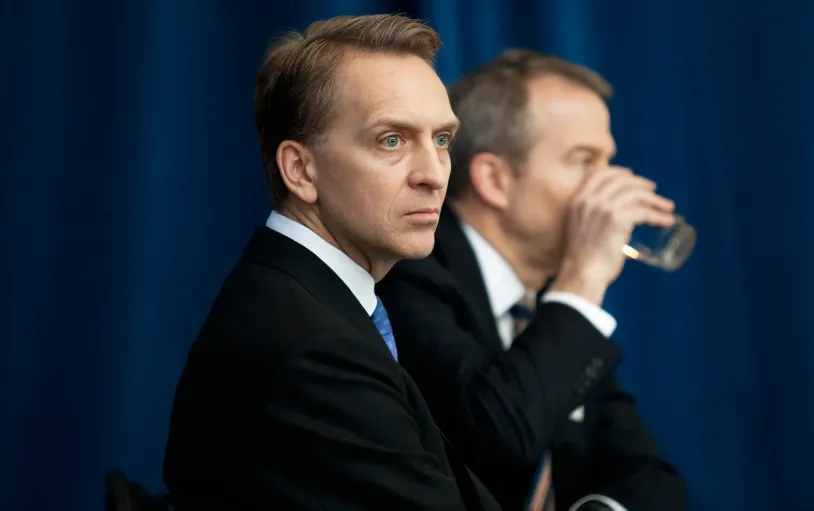The billionaire is confident that China is the most promising place to invest, so he plans to install solar panels in Chinese warehouses and gradually choose other investment projects that will bring him profit
When it comes to China, the news feed is full of headlines about tariffs, trade and Trump. Global financial markets rise or fall after every tweet. So it’s no surprise that billionaire Bruce Flatt, head of the Canadian company Brookfield Asset Management, got some attention in late March when he announced that he was going to install solar panels on almost every rooftop of a leading logistics warehouse operator in China.
GLP, co-founded by entrepreneur Ming Zhi Mei, is not well known in the U.S. But when goods move in China and other developing countries, they are very likely to spend some time in GLP warehouses. The company manages nearly 700 million square feet of logistics space worldwide, with half of the space in China. In terms of space, it’s almost as big an operator^ as Prologis, the leading North American company whose market capitalization is $33 billion. Brookfield is using GLP’s rooftops to build a distributed solar grid designed for China’s growing industrial metropolitan areas on the East Coast – e.g. Shandong, Hefei, Guangzhou, Nanjing, Ningbo, Yanzhou. Although the joint venture, with equal participation from the partners, has not attracted press attention, expectations for its potential are high.
The joint venture is expected to cover 300 million square feet of space and eventually produce 1 gigawatt of energy for electricity-starved cities. The venture will likely involve hundreds of millions of dollars of private capital and even larger amounts in the form of debt financing, but Brookfield and GLP’s stated goal is to strengthen their market position. GLP’s share of China’s logistics market is less than 10 percent, Brookfield is one of the world’s leading players in the renewable energy industry, and China is its largest untapped market. As the country moves away from coal mining and builds energy infrastructure, Brookfield is betting on distributed generation as a key source of energy.
Flatt’s $285 billion giant management company is pouring its money into the arteries of the global economy. Office towers, shopping centers, ports, railroads, power plants, highways, solar and wind farms and pipelines are everywhere from North America to Europe, Brazil, India and Australia. In 2017, the company made $10 million in investments in Brazil and India, closing deals struck when foreign capital was leaving both countries. As those countries’ economic growth slows, Brookfield has a port of strategic importance, a pipeline and office infrastructure to spare. But that may be minutiae compared to China.
“It’s incredible how much China has managed to do in the last twenty-five years,” Flatt recently told Forbes. Although official gross domestic product figures show that China’s economic growth is slowing, which sometimes worries investors, Flatt is attracted to new opportunities. Economist Jim O’Neill recently estimated that total output will reach $12.7 trillion in 2017, $1.5 trillion more than in 2016. According to the World Bank, China’s GDP per capita has tripled since the crisis.
In terms of population and GDP growth, China will be a major player, Flatt says; overall, China’s economic transition has been done so thoughtfully that it is now a favorable destination for our investments.
About 1 percent of Brookfield’s assets (several billion dollars) are now invested in China. That’s going to change now. In Flatt’s own words, “The bottom line is that I believe that in twenty-five years, a third of our business will be in China. If China is now at the stage of development where attitudes toward foreign capital are becoming increasingly positive, the company is ready to act. Flatt explains, “We’ve spent almost fifteen years building our business in the Asia-Pacific region. Now we can finally achieve something in China.”
New regional power plant.
Brookfield came to the region after acquiring Australia’s Multiplex for $3.8 billion in 2007, a deal that gave the Canadian company control of a major construction business and office properties worth about $6 million in cities such as Sydney and Perth. During the crisis, it acquired Prime Infrastructure, which managed assets like the world’s largest coal terminal and dozens of ports.
Australia turned out to be not only a source of successful deals, but also a fulcrum for Brookfield’s expansion into Asia. Brookfield now operates in a multitude of countries. With the participation of partners he bought everything from the largest container and automobile ports to shares in the giant real estate properties in downtown Seoul and Shanghai. Japan, with its many family-owned companies, was also in the spotlight.
Stuart Upson, Brookfield’s head of Asia Pacific, joined the company during the Prime deal and became a key manager as the assets grew and the number of employees passed 10,000. In 2013, he coordinated Brookfield’s first attempts at direct investment, at first through a partner search. Brookfield’s first deal involved billionaire Vincent Lo and Shui On Land, the developer of Xintiandi, a Shanghai entertainment center. The company paid about $750 million for 25 percent of Shui On. In addition to Xintiandi, Shui On has done several large greenfield projects, most notably near Shanghai Airport. The company then came to China when Upson opened an office in Shanghai and built a team of inward investment specialists over three years to explore opportunities. Brookfield now has 150 employees in its Shanghai office, thirty of whom are involved in investments. With the recent acquisition of solar energy producer TerraForm Global, about a hundred more employees have joined the company to develop a joint project with GLP.
Upson says Brookfield tries to choose investment sites that fit its expertise and China’s policies. Renewable energy has always been an obvious focus, given Brookfield’s NYSE-listed renewable energy business. “The energy hubs on China’s east coast are markets where demand now exceeds supply, and there’s no way to make up the shortfall fast enough. We’re going to have to solve this problem with transmission infrastructure and with distributed generation,” he says. – That’s how we came to the conclusion that the best way for us to get into the Chinese renewable energy market would be to invest in distributed generation through rooftop solar panels and any other compact ways we can get power.
It’s not just about renewable energy, but also real estate and private equity, where Brookfield is convinced of its ability to grow and manage large, high-value assets. Infrastructure may take longer because privatization of such assets is often on the back burner in development plans.
“The Chinese market used to grow rapidly, and we’re usually cautious about this kind of thing,” Flatt says. – Now the Chinese economy is becoming more like that of the developed world. The investment opportunities are more based on asset values and the operating side,” he adds. As a seasoned manager who has worked everywhere from the World Financial Center in New York to Canary Wharf in London, Flatt says, “Our operational skills can be extremely helpful to companies in this country.
The topic of trade wars and tariffs is likely to remain relevant for the foreseeable future. Whether Brookfield or other big asset managers like Blackstone, KKR, Carlyle, JPMorgan and BlackRock are showing interest in long-term investments in China, there is a second side to this story.
“In thirty-five years, half of global GDP will be in Asia and half in the Western economy,” Flatt says. – We believe China is a great place to invest.”




Leave a Reply
You must be logged in to post a comment.